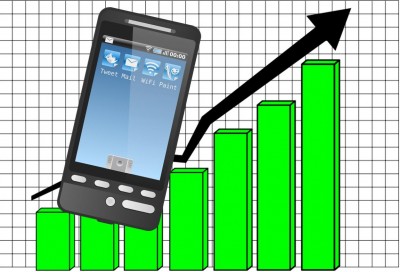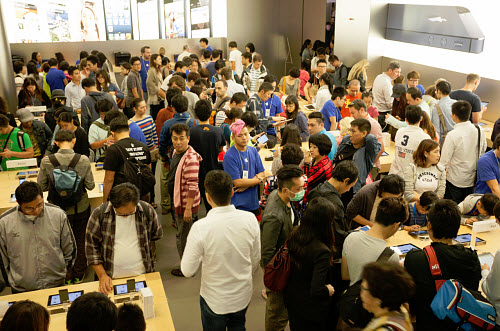According to the real time analytics that were recorded by IBM, this year’s shopping trends greatly beat out 2013.
On Thanksgiving Day, the unofficial start to the holiday shopping season, family members assembled to enjoy each other’s company, to watch football, to eat a wonderful feast, but when it was all over, they looked to mobile commerce to look for great deals.
The real time analytics from IBM for Thanksgiving Day showed online sales spiked 14.3 percent over the same day last year.
Mobile traffic made up a massive 52.1 percent of all online traffic on Thanksgiving Day, this year. This means that the figure rose by 22.4 percent when compared to that same day in 2013. When looking more specifically at the shopping side of mobile commerce, IBM found that of all online sales, those made over smartphones and tablets accounted for 32.3 percent. This was higher than last year’s figure by more than a quarter, as it represented an increase of 25.4 percent.
This success in mobile commerce on that day was explained by a number of different factors.
 Those contributors included the following:
Those contributors included the following:
• Consumers were eager to discover great online bargains, even when the stores were closed. The average order value (AOV) was 1.8 percent lower than it was last year, at $125.25. That said, those shoppers were buying an average of 4.3 items per order, which was an increase of 16.2 percent. This suggests that people were actually buying more, but they have become more savvy when it comes to finding ways to save such as through the use of online rebates and coupons.
• Smartphones were being used to browse for products, but mobile purchases were made over tablets and many still looked to their laptops and desktops. Smartphones may have driven 36.4 percent of the total online traffic (over double that of tablets, which represented 15.4 percent of online traffic), but sales over tablets made up 17.9 percent of the total and smartphones made up only 14.4 percent of the total. Desktops still reigned supreme over mobile commerce at 67.6 percent of the online sales total.
A recent study has shown that 1 in 10 smartphone based ad impressions brings shoppers into stores.
A new report has been released by xAd, a mobile ad startup, that has revealed some interesting new insight into the impact that mobile marketing is having on shoppers who are being influenced by the advertising that they receive.
The report was based on a study conducted by the company, and showed that people are responding to mobile ads.
The mobile marketing study looked into the way that smartphone ads impacted store visits within the retail, restaurant, and auto industries. What it found was that connected with consumers in this way was leading to more store visits and was improving offline conversions. These findings are important because mobile marketers have been struggling to be able to measure the success of their campaigns, as many consumers do not actually make their purchases over the same device that they receive the ads. This makes conversions a challenge to measure.
The mobile marketing report from xAd was based on the results of a study that Nielsen conducted on their behalf.
 xAd brought in the expertise of Nielsen in order to both analyze and measure the effectiveness of mobile ads across 12 major brands and almost 80 individual smartphone based advertising campaigns within the retail, restaurant, and auto sectors. The report focused on the use of creative messaging and location based proximity targeting and the way that outcomes were impacted by those campaigns.
xAd brought in the expertise of Nielsen in order to both analyze and measure the effectiveness of mobile ads across 12 major brands and almost 80 individual smartphone based advertising campaigns within the retail, restaurant, and auto sectors. The report focused on the use of creative messaging and location based proximity targeting and the way that outcomes were impacted by those campaigns.
What it found was that 10 percent of the smartphone users that actually looked at a retailer’s ad on a mobile device did eventually visit the store location of that retailer. Moreover, the research also determined that 77 percent of transactions that begin over smartphones and tablets and up being completed in a brick and mortar shop.
The director of marketing at xAd, Sarah Ohle, explained that “What we’re really trying to do in this study is understand the full potential of mobile.” She added that “One of the great things about mobile is obviously that you can reach people online and have them engage you. That gets a lot of focus.” However, she pointed out that what mobile marketing is capable of doing that other past forms of media cannot is to track behavior that occurs offline.
 Those contributors included the following:
Those contributors included the following:
 xAd brought in the expertise of Nielsen in order to both analyze and measure the effectiveness of mobile ads across 12 major brands and almost 80 individual smartphone based advertising campaigns within the retail, restaurant, and auto sectors. The report focused on the use of creative messaging and location based proximity targeting and the way that outcomes were impacted by those campaigns.
xAd brought in the expertise of Nielsen in order to both analyze and measure the effectiveness of mobile ads across 12 major brands and almost 80 individual smartphone based advertising campaigns within the retail, restaurant, and auto sectors. The report focused on the use of creative messaging and location based proximity targeting and the way that outcomes were impacted by those campaigns.